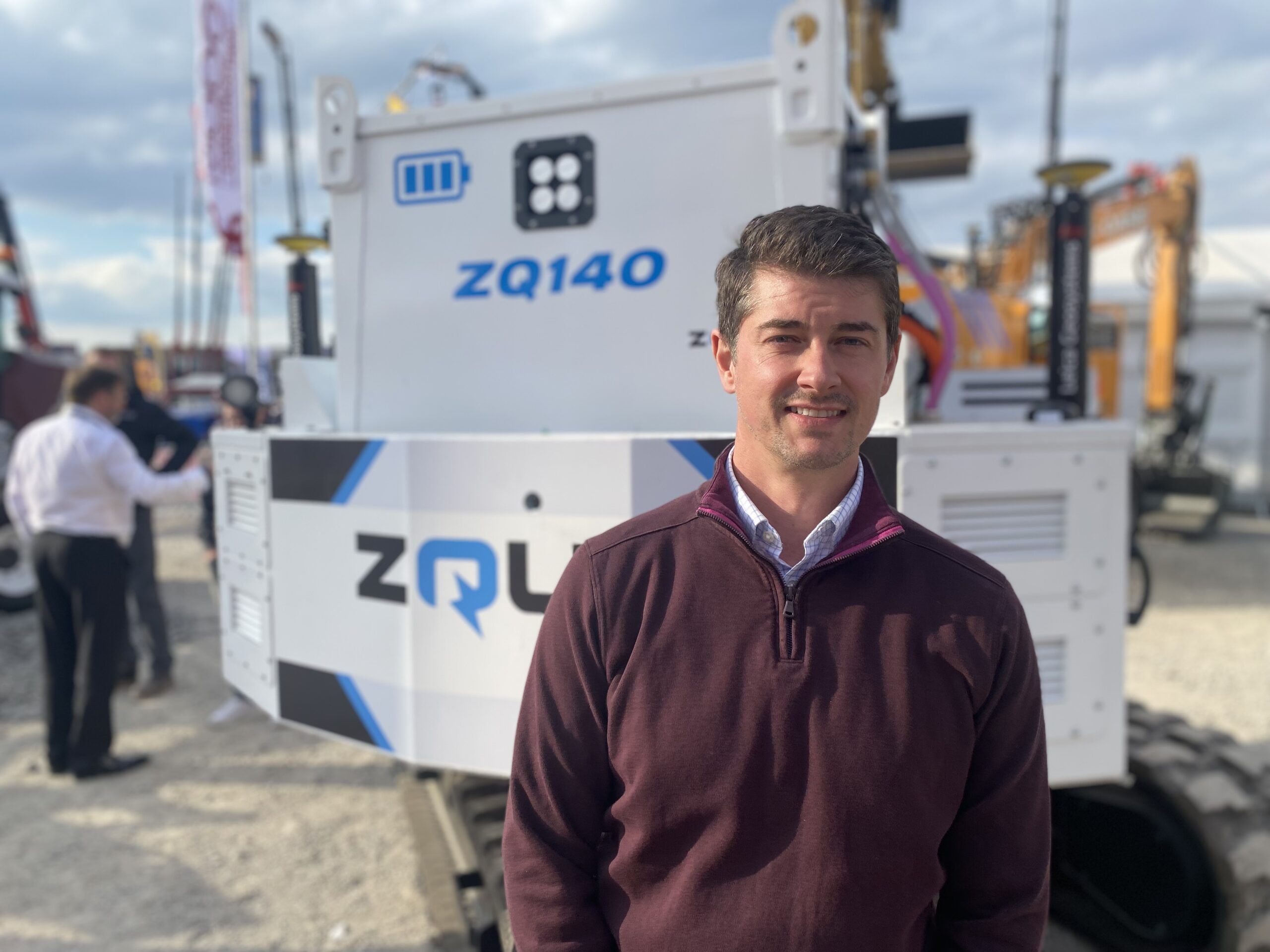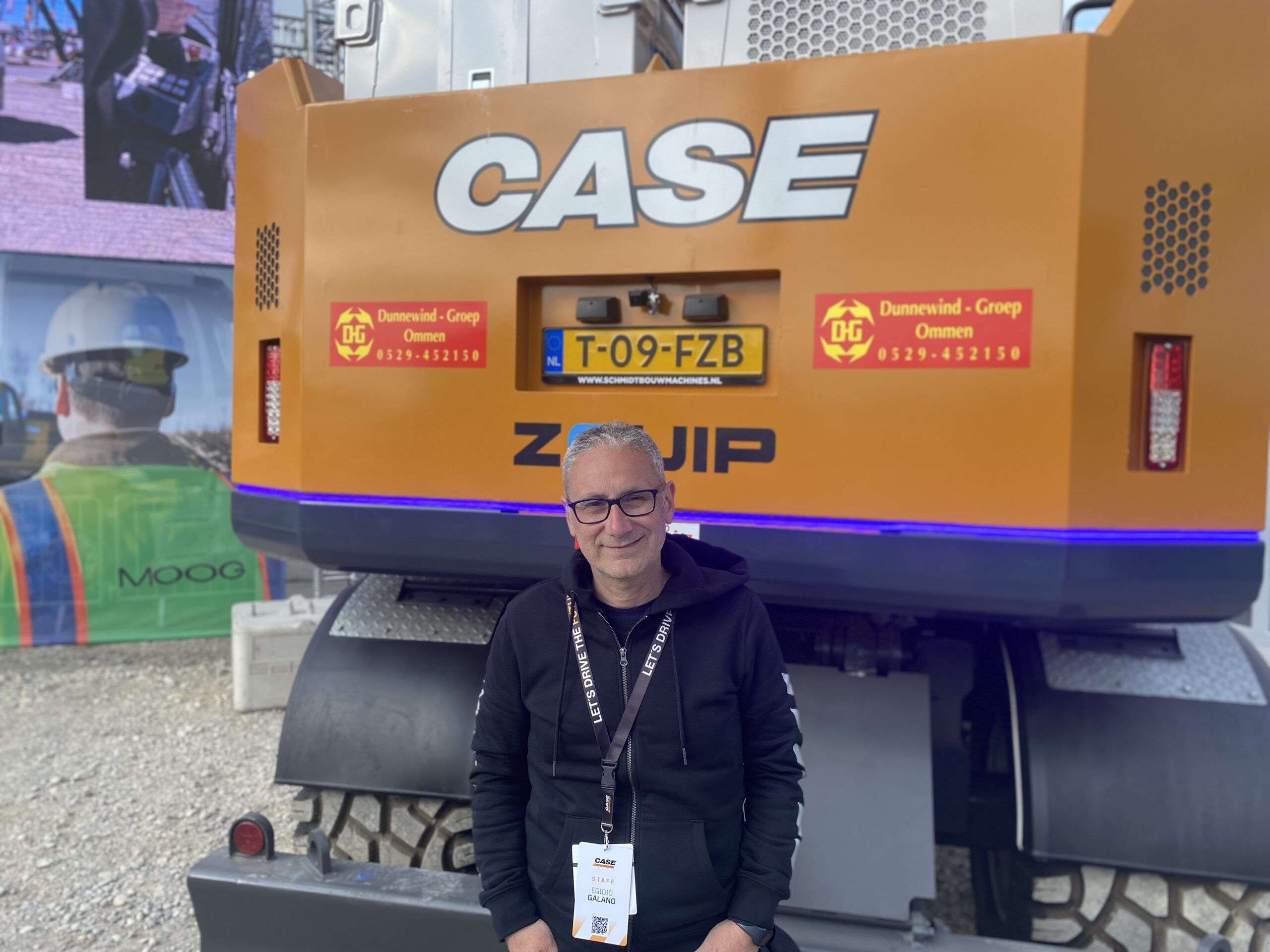Case Building Tools has introduced a brand new partnership with ZQuip to ship automobiles with swappable power modules that remove vary anxiousness whereas providing unprecedented flexibility in energy supply choice
A problem for OEM engineers when designing electrical building equipment is creating the suitable stability of battery capability, energy and charging time. However, with a radically totally different answer supplied by ZQuip, a part of Moog Building, Case Building Tools is constructing in a brand new stage of flexibility.
Unveiled at Bauma in April, Case’s CX210ZQ tracked excavator and WX155ZQ wheeled excavator utilise ZQuip’s swappable power modules that may accommodate varied energy configurations together with simply batteries, hybrid configurations with diesel turbines to cost batteries on the transfer, and sooner or later, hydrogen gasoline cells and combustion.
The system offers not solely flexibility but additionally price advantages. “A totally built-in battery system is extraordinarily costly upfront,” says Chris LaFleur, managing director of ZQuip. “This method permits them to purchase basically a naked device, at a a lot cheaper price level.”
The ‘naked device’ can then be geared up with no matter energy supply the client wants, which may start with a low-cost answer however evolve to one thing increased finish over the lifetime of the machine. The modular strategy means clients can make the most of no matter energy options are developed, which at the moment consists of totally different battery chemistry choices – high-output NMC batteries present most efficiency for demanding purposes, whereas LFP batteries supply lower-cost options for traditional operations.
“The client decides how he needs to make use of it,” says Eric Zeiser, product portfolio supervisor at CNH Industrial. “If he needs to maintain his price low to start with, he should buy only one power module. He may purchase the best module accessible to maintain his preliminary buy value down. After which, sooner or later, if in six months he realises his job websites are larger, he wants extra energy, he buys the second and third module as he must.”
The 2 Case automobiles are totally different sizes with totally different energy wants, so the WX155ZQ accommodates two power modules whereas the CX210ZQ helps three modules. The extra modules a machine has, the extra flexibility there’s. “On the three-bay CX210 you may have an LFP battery, an NMC battery and a diesel hybrid module, all collectively working on the similar time,” says LaFleur.
Weight administration presents a vital consideration given the totally different lots of assorted power modules. “The load of the machine when it has a full load of batteries is designed to be similar to the usual Case machine,” says Rob Bauer, engineering supervisor for ZQuip. Decreased-weight configurations nonetheless stay protected for transport and light-work purposes, but when the operator needs to revive full lifting capability with fewer power modules, ballast models containing concrete might be added.

Low-emission imaginative and prescient
No matter energy configuration is opted for, decreasing emissions stays a core precept of the ZQuip system. For prolonged runtime necessities, hybrid modules mix electrical operation with diesel technology, however this nonetheless maintains diminished emissions in comparison with typical diesel-hydraulic machines. “The excavators are all the time electrical,” confirms Bauer. “The query is, the place does the power come from? In an optimum case, when you’ve gotten a standard workday, you’re pulling all of the power out of a battery, and that’s a terrific day. All the pieces’s excellent. Then again, should you’re in a tough website, or you must work numerous hours in a day, we offer you choices.”
The ZQuip system offers 4 distinct strategies for ‘refuelling’: in a single day charging, fast-charging, full module swapping, and hybrid operation with steady charging of batteries throughout work. This flexibility addresses the unpredictable nature of building work. “Everyone knows that in building, issues generally go sideways,” says Bauer. “So that you begin your day with one plan, however you finish your day in a unique plan. Possibly supplies didn’t present up on time. Possibly the climate went dangerous.”
Surprising conditions require speedy reactions, and the ZQuip system permits operators to change between full electrical and hybrid operation to ship operational continuity no matter altering job website necessities. “The machine is subject configurable in about three minutes,” says Bauer.
The modular structure transforms upkeep operations by eliminating machine downtime throughout service. When hybrid modules require upkeep, the module might be eliminated and serviced off-site whereas the machine continues working with various energy sources.“In a standard machine, in case your energy supply shouldn’t be working, you must take the entire machine to a facility,” says Bauer. “On this machine, you merely pull that module out, you set it on a small truck, take it to a quite simple, cheap storage and maintain that service. Whereas that’s occurring the machine’s nonetheless working.”
“We’ve efficiently gone from idea to prototype and at the moment are delivering these models to clients. We’ve solved the engineering challenges to create a wholly new world of building, unbiased of which means future energy wants take the trade”
A rising household
For Case Building Tools and its dad or mum firm, CNH Industrial, the ZQuip partnership represents a strategic enlargement past current compact electrical choices. “CNH has all the time been a frontrunner in sustainability and we now have a full vary of compact electrical automobiles, however we didn’t have an answer for heavy equipment till now,” says Egidio Galano, director of building tools product administration for Europe at CNH Industrial.
The collaboration builds on a longtime relationship between the businesses courting to 2019. Case’s 580EV electrical backhoe loader, launched in 2024 because the trade’s first production-ready purpose-built electrical backhoe, makes use of Moog’s TerraTech platform for electrical movement management. “The ZQuip answer permits us to rapidly broaden our attain to these clients which have a necessity for bigger, zero-emission heavy tools,” explains Franco Invernizzi, vp and international head of CNH Building Tools Technique.
The system’s engineering represents an achievement in standardization. All power modules utilise similar mechanical and electrical interfaces, no matter energy supply. The mechanical retention system employs a fast disconnect mechanism just like bucket attachments generally utilized in building tools. “There’s a mechanical lock,” Bauer explains. “So only a mechanical lock is similar to the way in which a bucket is retained on to a fast disconnect on a machine. It’s a really comparable mechanism. So it’s fairly easy, one thing that’s tried and true within the building trade.”
{The electrical} interface consolidates excessive voltage, low voltage, and communication connections right into a single touch-safe connector requiring no instruments. Two quick-disconnect coolant connections full the interface.
The system additionally offers knowledge via in-cab shows and distant monitoring. Operators obtain real-time automobile data. This knowledge stays accessible through cell gadgets when operators are away from the machine.

Actual-world deployment
The transition from idea to manufacturing displays robust buyer curiosity. Netherlands-based Case supplier Schmidt Bouwmachines has begun accepting buyer orders, whereas building agency Dunnewind Groep, additionally within the Netherlands, has taken supply of a WX155ZQ.
“We’ve efficiently gone from idea to prototype and at the moment are delivering these models to clients,” says LaFleur. “We’ve solved the engineering challenges to create a wholly new world of building, unbiased of which means future energy wants take the trade.”
The ZQuip system’s versatility extends past Case tools. It’s an OEM-agnostic system that ZQuip has already retrofitted in quite a lot of totally different machines for the rental sector. It has the potential to transform just about any diesel hydraulic building automobile from 5 to 50 tonnes, and potential utility to 70-tonne machines in sure configurations.
This broad compatibility, mixed with the strategic partnership between established trade leaders, positions the modular energy strategy as a key growth within the electrification of building tools. The collaboration demonstrates how modern engineering options can handle the challenges of electrical transition whereas sustaining the flexibleness that building purposes demand.


